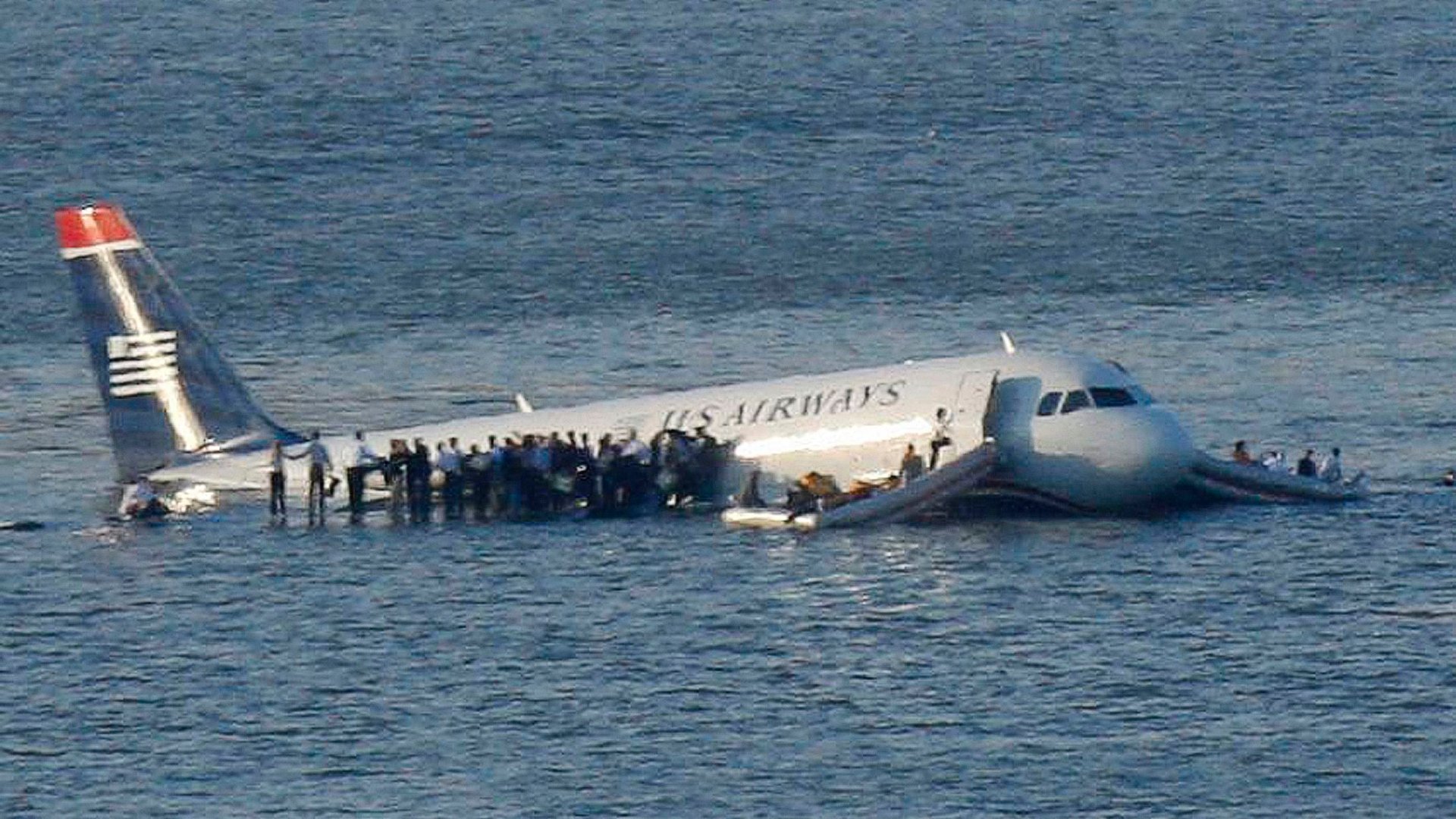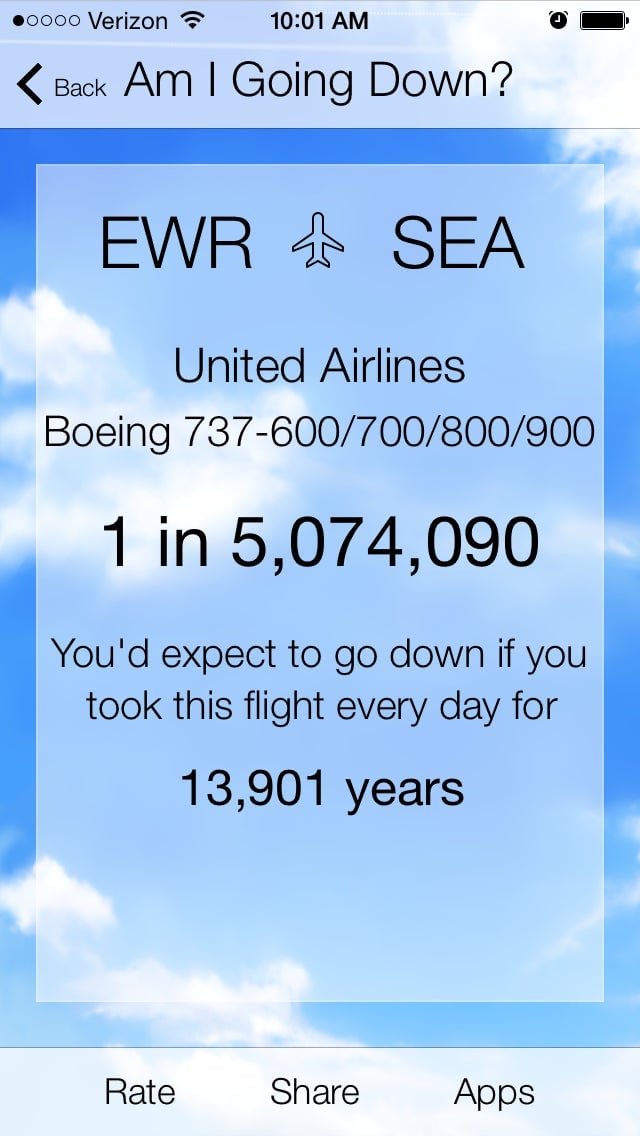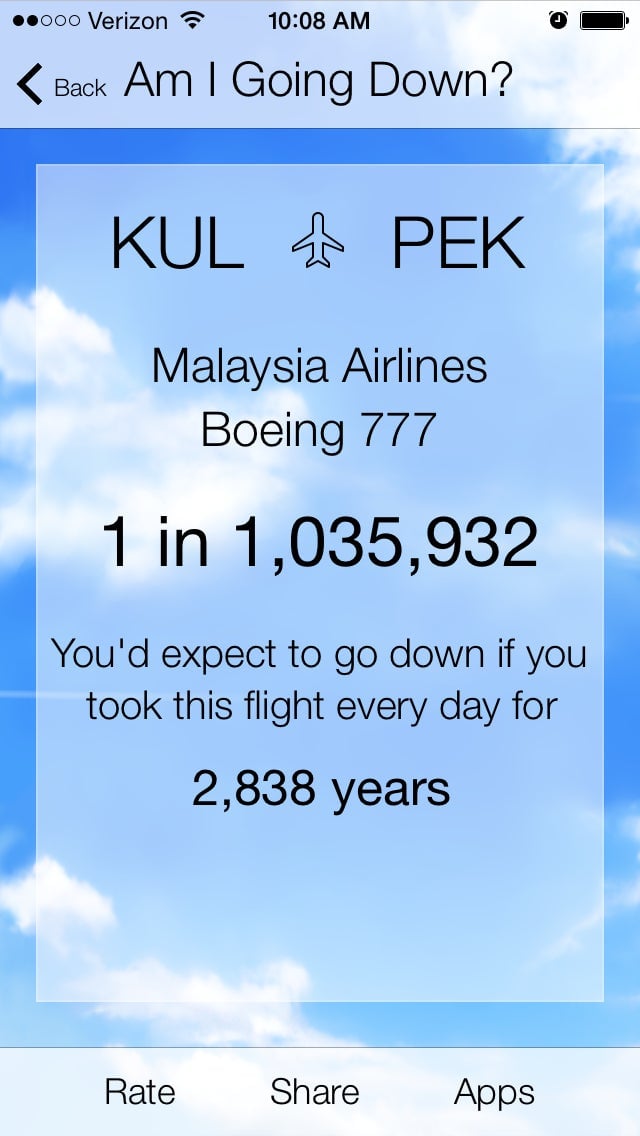There’s an app to calculate the odds of your plane crashing
Many of us, when shuffling onto a transcontinental flight, check a smartphone app to find out the weather at our destination. Now there’s an app that purports to tell you how likely you are to fall out of the sky to a fiery death somewhere over the Atlantic.


Many of us, when shuffling onto a transcontinental flight, check a smartphone app to find out the weather at our destination. Now there’s an app that purports to tell you how likely you are to fall out of the sky to a fiery death somewhere over the Atlantic.
“Am I Going Down?” claims to provide an airplane’s odds of crashing—which are always infinitesimally small—as a way of reassuring skittish passengers. Using it is simple: select the departure airport, the destination airport, the airline, and the aircraft type. It outputs a probability of your plane crashing.
Judging by the app, when I visited Seattle from New York over Christmas, I had about a one in 5 million chance of crashing. (We landed unscathed.)

Of course, there are several problems with taking these predictions seriously. While the precise methodology is not specified, the app’s creator, Nic Johns, told the Daily Mail that he weighed the total volume of flights against the number of fatal crashes for each set of parameters, to compute the probability of a crash. (Quartz reached out to Vanilla Pixel, the app company, and will update this post if we hear back.)
To apply its algorithm in a rather macabre way: A Malaysian Airlines Boeing 777 that flies from Kuala Lumpur to Beijing—as MH370, the flight that went missing somewhere over the Pacific in March 2014, did—has a probability of about one in a million of crashing, according to the app—much worse than my flight to Seattle, but still pretty safe. (It is not clear if that calculation takes into account the two Malaysian Airlines planes that went down this year.)

But because airplane crashes are so rare, using this simplified approximation—takeoff and landing location, airline, and plane type—doesn’t seem likely to yield useful data for prediction purposes. Crashes are more likely due to unpredictable and complex factors stemming from bizarre situations and human error.
Johns told the Daily Mail that he “wanted to make an app that demonstrates … that flying is in fact extremely safe.” That’s an admirable intent. Flying is indeed safe—more so than traveling in a car, by some calculations—yet people still fear it. In 2014, there were just 2.1 crashes per one million flights as of September, and 2013 had 210 fatalities out of 3 billion safe trips. Still, in the 2014 Chapman University Survey on American Fears, 43% of those surveyed said they were at least “somewhat afraid” of flying, while 9% said they were “very afraid” or had refused to fly due to fear.
It doesn’t seem likely that the app’s calculation of the odds of crashing, no matter how reassuring they might sound, would do much to quell serious fears. An irrational fear is generally pretty impervious to rationalization. For more serious aviophobics, treatments such as exposure therapy might be a better solution.